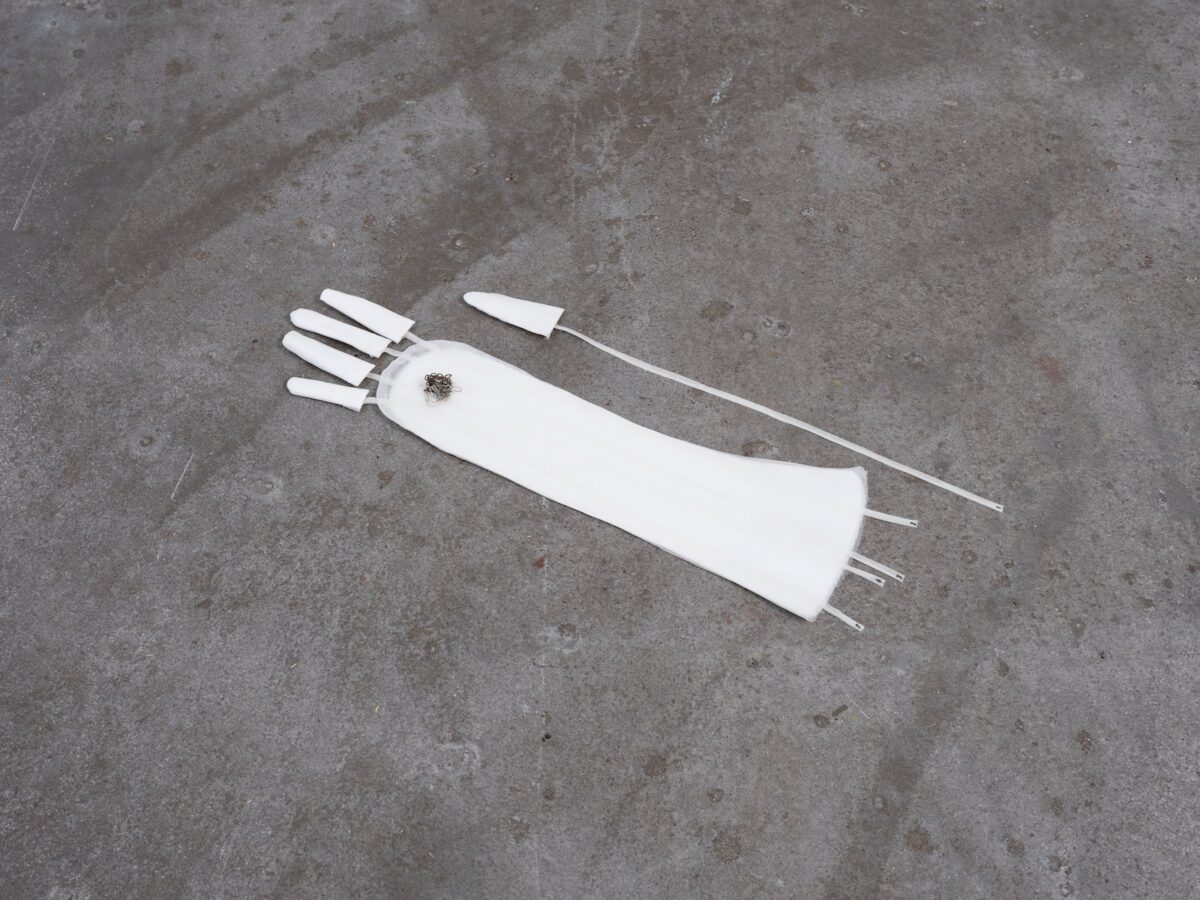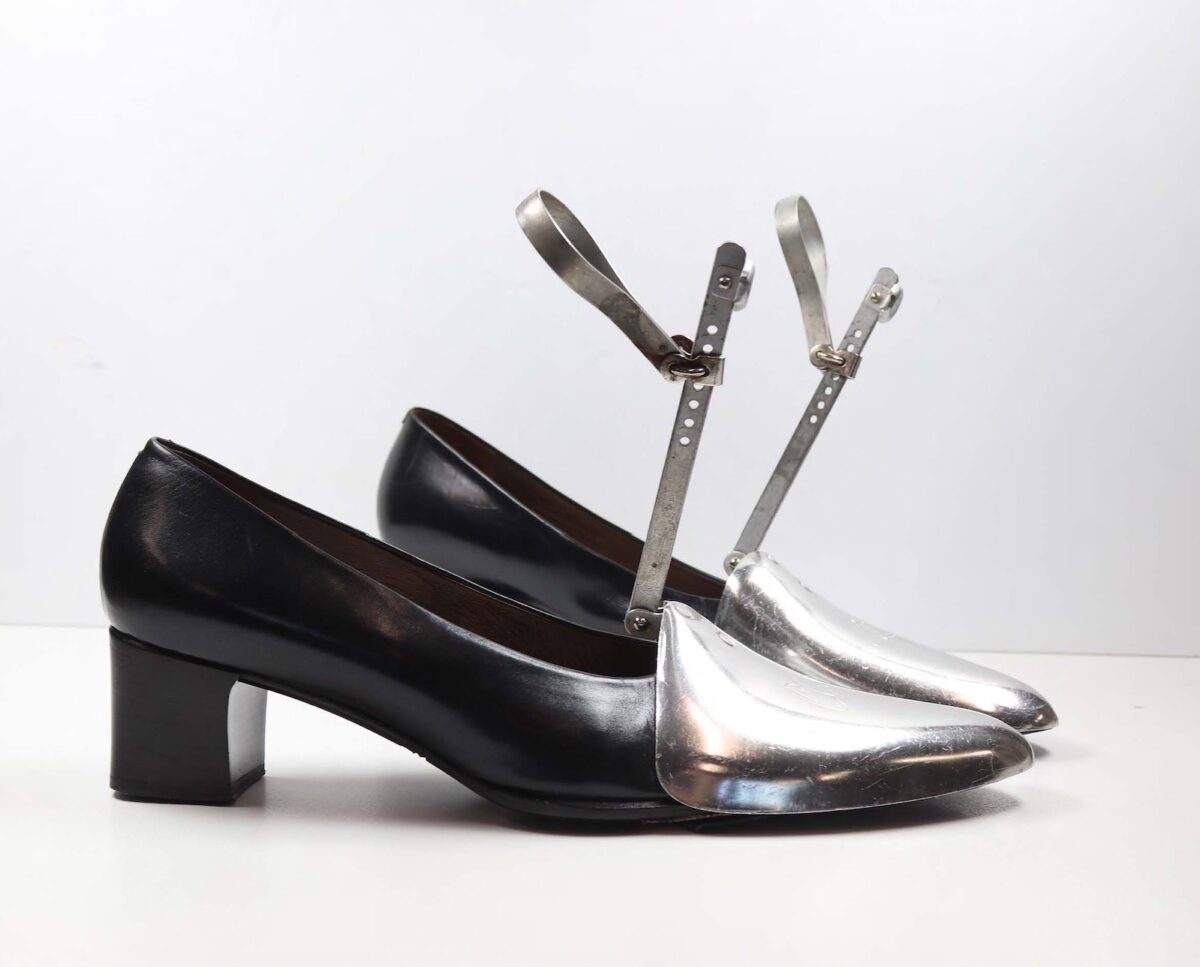Based in Antwerp, Belgium
Website https://inestorrens.com
Research project Thirty seconds...and Yet
Location ArtEZ University of the Arts, Arnhem (NL)
Can you describe your research project?
Two years ago, I created a research-based collection, aiming to translate, through a design process, the conditions of garments in museum conservation rooms. It offered me the space to re-imagine garments in a zone without body and a singular displaying, re-thinking on its core values and evanescence.

Why have you chosen this topic?
I am interested in the unseen, the encrypted languages. I like to decipher the hidden corners, the lack of a discipline.
There are many contrasts revealed through that topic. An organic delicateness and yet a sharp protocol ambiance. The survival of garment is fascinating as it goes by combining craft methods and technologies together. Digital technology is also enabling new forms of collecting, presentation, as well as preservation. I took the metaphor of the x-ray and uv lighting used by restorers into my research, developing printing techniques showing invisible patterns on textiles excepting under special light conditions. This idea of working with layers has been a key point in the making.
It is also a one-of-a-kind enclosed space where you see garments interacting with no-bodies or, as I call them, museumified bodies. Far from media’s tyranny on body morphing, I found in that unhabited world something precious and deeply meaningful. It represented the lacking point of my garment’s knowledge but also the lacking point of the entire fashion system, whose main pillar relies on hypervisibility and overspeed.

What research methods do you use?
As a base of my practice, I do cultivate a direct object-oriented approach. I try to convoke honest materials into my process, in both structural and functional ways. This brings me to search for often incarnated, memory-laden tools and items. I like to confer symbolic traits to the materials I am practicing with, imbuing them with a stronger significance and trying to elevate the act of making to a performative ritual.
I am a constant collector during the first steps of my projects. From this gathering often rises questions and answers. The relationship to tangible images also takes part in the collecting dynamic. I find a lot by simply sticking images together, staring at them from a special distance, through a mirror or a corner perspective, turning them upside down, etc..

In what way did your research affect your artistic practice?
This project is a sort of conversation between different disciplines. In that way, it completely reshaped my vision of clothing design, I didn’t intend to find so many possible trajectories in my way of thinking and my working environments.
Every piece I made for that collection has been sending something back to me. I never expected the emotional and sensorial input each of them would convey. It’s research with an important conceptual foundation, but the real force in it lies in the intuition behind the making. I make sure to keep this instinctive breath in my practice.

What are you hoping your research will result in, both personally and publicly?
This research could be reshaped almost endlessly, I currently imagine an exhibition merging a performative dimension. There really is a special excitement in mixing up artistic disciplines, making them transitory. My approach of garment making is strongly tied to the notion of space revolving around them. This comes from my first love which is scenography, that I see as a special writing combining all the art mediums together; an extraordinary sense of freedom to me.
I want to push the question of absent body further through the creation of a performance. This would put a strong emphasis on the real time presence of bodies of performers wearing and interacting with those ‘surrogate bodies’, layering the archive from past morphologies with their own liveness. Placing a garment on a mannequin in a museum is a re-embodiment within a specific performative framework. The malleable garment, echoing the living body it once covered, protected and ornamented, is placed upon a fixed form. The notion of movement and mobility continuously criss-cross through the mannequin and the living body. The performance translation would be the synergic output of those two forces.
On a personal level, I have a multifaceted professional identity, my work moves between visual art, costume design and heritage projects. I guess that the openness of this work might get an influence. There is certainly a beautiful and strong introspective journey I am engaging in through the material tactility, the final shape and its unforeseen atmosphere. A sort of travelness that I cherish beyond the rest and wish I could share to others.





